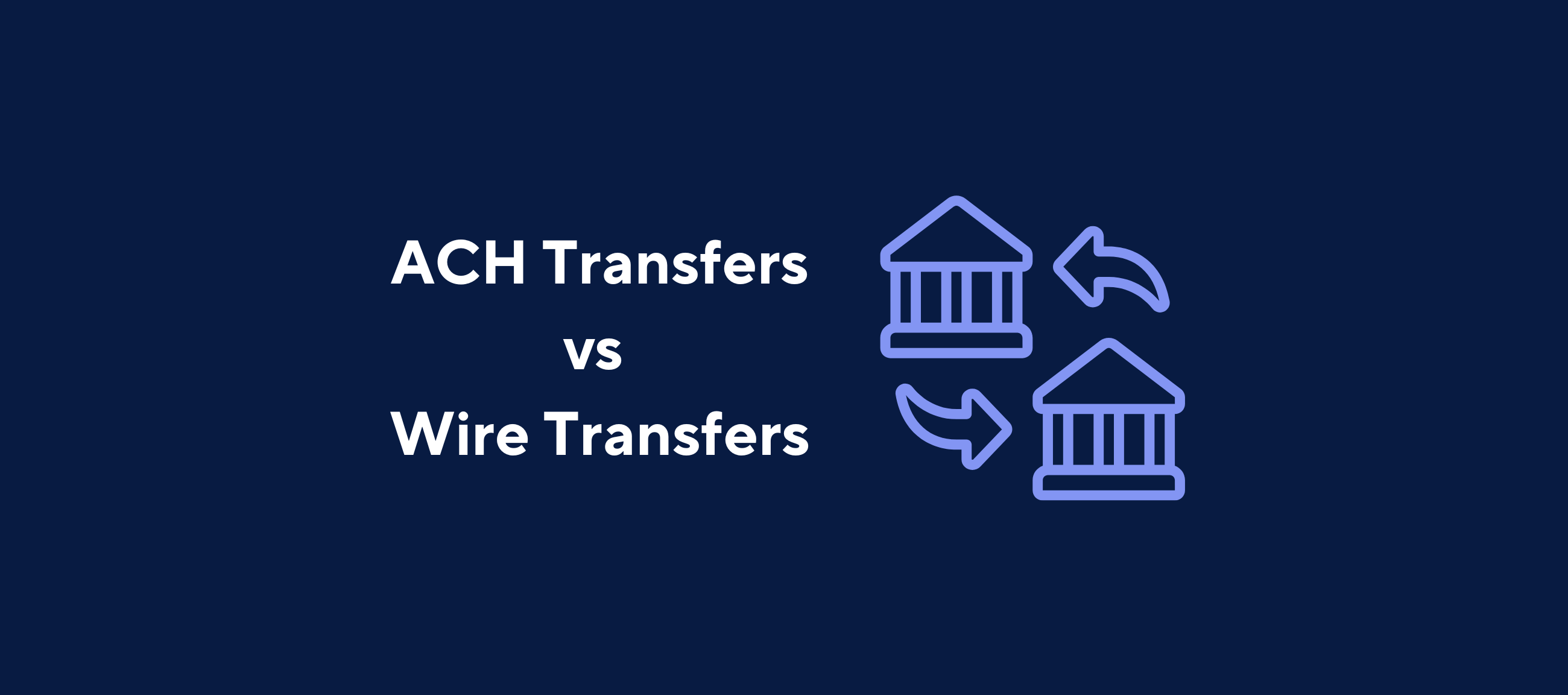A wire transfer is an electronic method used to transfer funds between banks or financial institutions. It allows individuals or businesses to send money quickly and securely without the need for physical cash or checks. The process involves transferring funds from one bank account to another, either domestically or internationally, through a secure network of financial institutions.
In essence, a wire transfer involves a sender instructing their bank to transfer a specified amount of money to a recipient’s bank account. Unlike a bank transfer, the sender’s bank acts as an intermediary in this process. Wire transfers take place electronically and can be completed within a few hours, depending on the location of the banks and the type of transfer being made. Compared to ACH transfers, which can take a few days to process, wire transfers are usually faster, making them ideal for situations where funds need to be transferred urgently.
Both domestic and international wire transfers follow similar principles, but there are key differences in terms of cost, processing time, and regulations. Domestic transfers are handled within the same country and are generally quicker and less expensive. International wire transfers, on the other hand, can involve additional steps, such as currency conversion and intermediary banks, which may result in longer processing times and higher fees.

How Does a Wire Transfer Work?
Wire transfers begin when the sender provides their bank with all the necessary details, including the recipient’s bank account number, the name of the recipient’s bank, and, in the case of international transfers, a SWIFT code or international bank account number (IBAN). The sender’s bank then processes the transfer request through a secure system, ensuring that the funds are sent from one bank to the other.
The funds don’t physically move between institutions, but the banks use their own systems to ensure the correct amount is credited to the recipient’s account. This process is carried out through established financial networks such as SWIFT for international transfers or domestic systems like FedWire in the U.S. Once the transfer is processed, the recipient’s bank confirms the deposit and makes the funds available.
Types of Wire Transfers
Wire transfers are typically categorized into two main types: domestic and international wire transfers. Both types serve the same basic purpose, but they differ in terms of the processes involved, costs, and regulations.
Domestic Wire Transfers
A domestic wire transfer occurs when money is sent between two banks or financial institutions within the same country. These transfers are often completed quickly, usually within the same business day, and are subject to lower fees compared to international transfers. Domestic wire transfers are commonly used for sending large amounts of money or for time-sensitive transactions such as paying for a real estate transaction or making a significant business payment.
For domestic wire transfers, the sender must provide the recipient’s bank account number and the name of the receiving bank. In some cases, additional verification, such as a routing number, may be required. Since domestic transfers don’t involve currency conversion or intermediary banks, the process is more straightforward and typically incurs fewer fees.
International Wire Transfers
International wire transfers involve sending money between banks in different countries. These transfers are more complex because they often require currency conversion and may involve intermediary banks to facilitate the movement of funds across borders. As a result, international transfers can take several days to complete and tend to be more expensive due to additional fees, including those for currency exchange and intermediary bank fees.
To send an international wire transfer, the sender needs to provide additional details such as the recipient’s international bank account number (IBAN) or a SWIFT code, which ensures the transfer reaches the correct bank. The sender’s bank will also need to confirm that the transfer complies with local and international regulations, including those related to foreign assets control and anti-money laundering measures.
How to Initiate a Wire Transfer
The process of initiating a wire transfer can be broken down into several key steps, each requiring specific information from the sender. While the exact procedure may vary depending on the financial institution, the overall process remains consistent across most banks and wire transfer services.
Step 1: Gather the Necessary Information
Before you can initiate a wire transfer, you need to collect important details from both the sender and recipient. These include the sender’s bank account number and, for domestic transfers, the recipient’s bank account number and routing number. For international transfers, you’ll need additional information, such as the recipient’s international bank account number (IBAN) and SWIFT code. Ensuring the correct bank account information is critical to avoid any delays or misrouted payments.
It’s also essential to double-check the recipient’s name and the bank’s name, as wire transfers cannot be reversed easily once they are sent. In the case of international transfers, some banks may require the address of the recipient’s bank to ensure the transaction complies with regulatory requirements.
Step 2: Submit a Wire Transfer Request
Once you’ve gathered all the required information, the next step is to submit a wire transfer request through your bank. Most banks allow this process to be done in person, over the phone, or through online banking platforms. If you’re using an online system, simply log into your account, navigate to the wire transfer section, and input the necessary details, including the recipient’s bank account information, the amount you wish to send, and any additional instructions.
For more significant transactions or international wires, some banks may require you to verify your identity by answering security questions or providing a one-time passcode. This extra layer of security helps protect both the sender and recipient from fraud or wire transfer scams.
Step 3: Pay the Required Fees
Wire transfers often come with associated fees, which can vary depending on the type of transfer. Domestic transfers usually have lower fees, often ranging from $15 to $30, while international transfers can cost anywhere between $40 and $75, depending on the country and the financial institution. Some banks may also charge additional intermediary bank fees for international transfers, which can further increase the total cost.
It’s important to note that most wire transfer services are not free, and the sender is typically responsible for covering the cost. In some cases, the recipient’s bank may also charge a fee for receiving the wire transfer, particularly with international transfers.
Step 4: Wait for Confirmation and Processing
After you submit the wire transfer request, your bank will process it, and you’ll receive confirmation that the transfer has been initiated. The amount of time it takes for the funds to reach the recipient depends on several factors, including the type of transfer and whether it is domestic or international. Domestic transfers are usually completed within the same business day, while international transfers can take several days due to the additional steps involved, such as currency conversion and intermediary bank verifications.
During this time, both the sender and recipient should monitor their bank accounts for any updates. The sender should receive a confirmation once the funds have been successfully transferred, while the recipient should see the funds deposited into their account. If there are any issues, such as insufficient funds or incorrect account information, the bank may contact the sender to resolve the issue before completing the transfer.
Security and Potential Risks of Wire Transfers

While wire transfers are generally safe and secure, they do come with some risks, especially when sending money internationally or to unfamiliar recipients. Understanding these risks and taking appropriate precautions can help ensure your money reaches the intended destination without issues.
Wire Transfers Security Features
Wire transfers are highly secure because they use well-established banking networks, such as the SWIFT system for international transfers, which ensures funds are transferred between banks using encrypted, secure channels. Domestic wire transfers also use reliable systems, such as the FedWire or the Clearing House Interbank Payments System (CHIPS), which are overseen by regulatory authorities to prevent fraud and ensure compliance with financial regulations.
However, because wire transfers are irreversible once they’re processed, it’s crucial to double-check the recipient’s bank details, such as their bank account number and the name of the receiving bank. Any mistakes in the provided information can lead to funds being sent to the wrong account, and recovering those funds can be difficult, if not impossible.
Common Risks and Fraud
One of the main risks associated with wire transfers is the potential for fraud, especially when sending large sums of money to unknown recipients or businesses. Scammers can trick individuals into wiring money by pretending to be legitimate entities, such as contractors or vendors, and then disappearing once the funds have been transferred. Wire transfer scams are particularly common in real estate transactions, where fraudsters pose as real estate agents or title companies to divert large sums of money.
To protect yourself from wire transfer scams, it’s essential to verify the recipient’s identity and bank details before sending any money. Never send money to someone you don’t know or haven’t verified, and be cautious of unsolicited wire transfer requests, especially those that come with urgent deadlines.
Dispute Resolution and Reversing a Wire Transfer
In most cases, wire transfers cannot be reversed once the funds have been sent. This is why it’s crucial to ensure all the provided information is correct before initiating the transfer. If a mistake is made, such as entering the wrong recipient’s bank account number, the sender must contact their bank immediately. While banks may attempt to retrieve the funds by contacting the recipient’s bank, success is not guaranteed, and recovery efforts can be time-consuming and costly.
For cases involving fraud, the sender should report the incident to their bank as soon as possible. Banks may be able to assist by working with law enforcement agencies, but there’s no guarantee that the funds will be recovered. This makes prevention and due diligence on the sender’s part all the more critical.
Are Wire Transfers Safe?
Despite the risks, wire transfers remain one of the safest ways to transfer large sums of money, especially when compared to sending physical money or checks, which can be lost or stolen. Banks and financial institutions have stringent security measures in place to protect their customers and ensure transactions are processed securely. For added security, many banks offer two-factor authentication or verification steps before allowing a transfer to be initiated.
For businesses or individuals regularly sending money domestically or internationally, it’s important to work with reputable financial institutions and always verify the account information provided. Following these best practices can significantly reduce the risk of errors or fraud.
Conclusion
Wire money transfers offer a fast, reliable, and secure way to move money between bank accounts, whether you’re sending funds domestically or internationally. By understanding how this type of transfers work, the types available, and the steps involved in initiating one, you can confidently use this service for various financial transactions.
However, it’s important to stay aware of the associated risks, especially when transferring large sums or sending money to unfamiliar recipients. Double-checking bank account details and taking security precautions can help safeguard your funds and ensure smooth transactions. While wire transfers are not without their challenges, they remain an essential tool for both businesses and individuals needing to send money quickly and securely across borders or within their own country.
Kolleno’s platform streamlines wire transfers by integrating secure, real-time payments into your accounts receivable process. With customizable workflows and automated tracking, businesses can process high-value, time-sensitive transactions quickly and reliably, helping reduce overdue balances and improve cash flow.
Ready to see how Kolleno can enhance your wire transfer and payments management? Book a demo today.




